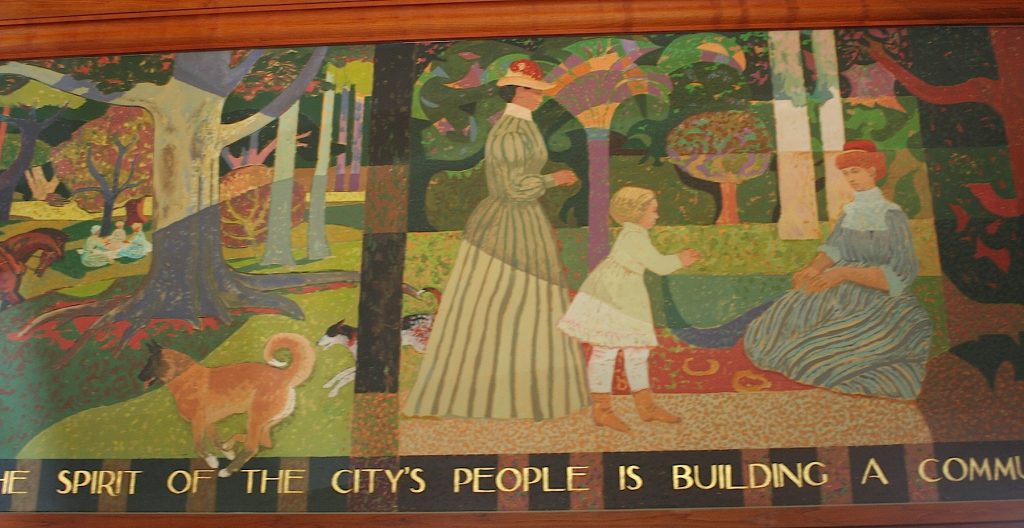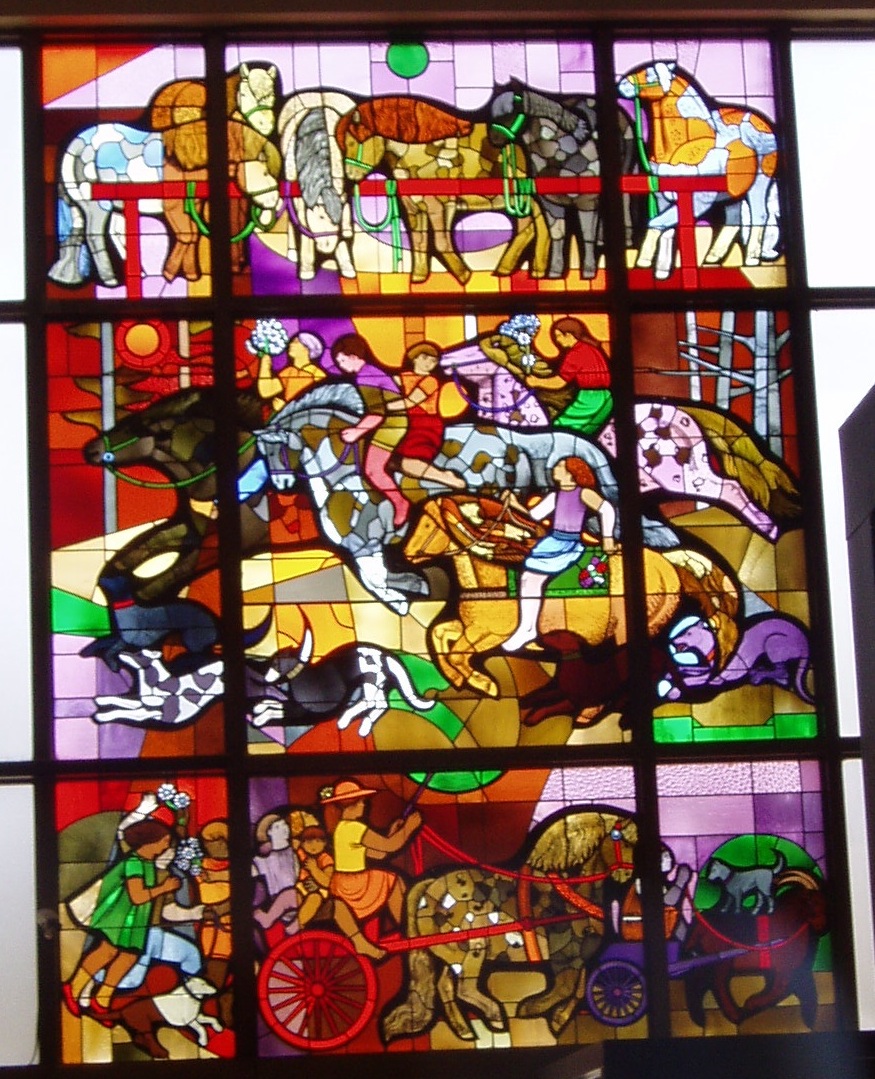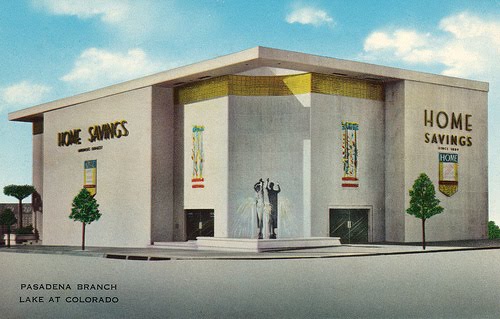
Millard Sheets mural "Panorama of Pomona Valley," 77 feet long and 7 feet tall, in a former Pomona First Federal becoming the new home of AMOCA. Photograph courtesy of Christy Johnson
I am proud to be part of a big announcement in Pomona arts! Here are excerpts from the letter from Christy Johnson, director of the American Museum of Ceramic Art:
I have great news! Mr. David Armstrong, AMOCA’s Founder, and his wife Julie are buying a nearby building in Pomona that David plans to make into a new home for our museum. The building is the former home of Pomona First Federal Bank at 399 N. Garey Avenue. The building itself is historic, exuding a mid-century modern décor, and the pièce de résistance is a Millard Sheets mural in the main room, “Panorama of Pomona Valley,” 77 ft. long & 7 ft. high, portraying a 100-year span just prior to the founding of the city. When the structure has been renovated to meet AMOCA’s needs, the Armstrongs will make the space available to the museum just as they have at our current location, for the last six years.
As a way of introducing this project, AMOCA is holding an open house at the new building on Sunday, October 17, from 2:00 to 4:00 pm. This is your opportunity to get a sneak peak at the spacious building, before the renovation begins. Wine and refreshments will be served.
AMOCA educates by presenting, collecting, and preserving significant ceramic achievements, past and present. To meet its objective, AMOCA has amassed a 1000-object permanent collection. The museum’s educational program stresses the unparalleled, cross-discipline value of ceramics: it is an art; a science; and a key to interpreting history.
And now, AMOCA will be able to expand their display space, develop ceramics studios, and more, in the expansive, prominent new space on Garey Avenue.
As Christy mentions, the museum’s move will benefit fans of Millard Sheets Studio art because this massive mural will be accessible to the public once again. Pomona First Federal was one of Sheets’s first bank clients; if my sense of the situation is correct, his artwork for the local chain predated his work with Home Savings. But Pomona First Federal was closed by the FDIC in 2008, as a “failed” savings and loan; hence when I drove by the Garey location in August with Brian Worley, we could only see the outside of the locked and empty buidling.
The location is a prominent one in Pomona, between the downtown mall and the freeway (and train) access points; it will helpfully expand the revitalization of Pomona’s downtown area around its vibrant arts history — and present, and future.
I have not been able to see this canvas mural in person, so I will comment on the image you see above, and some crosscurrents with other Sheets artwork. As Christy states, the mural depicts the hundred years of change before the opening of the bank (my records suggest 1957 for this location). The two centuries from the arrival of Junipero Serra and the mission system, through Mexican independence, the U.S. acquisition of California, the gold rush, and further town-building and modernizing is a favorite Sheets Studio time period.
As I will discuss in coming weeks, there are figures seen as representative and beloved that appear again and again — vaqueros, American Indians, Victorian ladies — but this mural (at least the section above) seems very engaged with the native peoples of the region, their customs and rituals, and how the establishment of the mission (at the center-right of the image above) brings change, for better or worse, to the native patterns of the region.
Sheets grew up in Pomona and loved horses — and his love for the region, and its specifics within the general history of California, come through here. Sheets also collected “pre-Columbian” Native American art, something I am learning more about. But clearly the influence of such ceramics and other artwork is on display in the colors and choices Sheets makes in depicting indigenous people — always with dignity and distinction, in the artwork I have seen, equal partners in the encounter of civilizations that marked the “discovery” of the Americas by Europeans.
I do look forward to celebrating with AMOCA in the coming months and years, and I am glad that David Armstrong will be securing its future!





